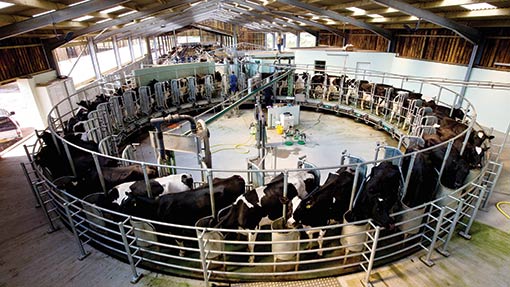How to prepare for milk price downturn

Dairy farmers are facing months of lower milk prices after processors announced a full round of painful cuts.
The big four processors and several smaller companies have issued drops for September or October, taking many prices below 30p/litre.
Muller Wiseman’s price fell to 29p/litre with a 1.8p/litre cut and Dairy Crest took 1.75p/litre off its manufacturing and liquid prices, taking them to 30.34p/litre and 28.34p/litre respectively.
See also: Five charts that explain the milk price crash
Milk price timeline
- 4 Feb Global Dairy Trade auction at record high of US$5,042/t (£3,060)
- 1 Apr GDT drops 8.9%, heaviest single drop for two years
- 8 Apr 2013-14 UK milk production highest in nine years
- 25 Apr Arla first to drop milk price, by 1.27p/litre
- 7 Aug Russia bans Western food imports, including dairy
- 22 Aug Arla issues fourth cut in five months, 4.63p/litre in total
- 28 Aug EU announces emergency measures to ease oversupply
- 29 Aug Muller Wiseman cuts milk price by 1.8p/litre
- 30 Aug Dairy Crest drops prices by 1.75p/litre
- 1 Sept First Milk cuts prices by 3p/litre
- 2 Sept GDT falls 6%; now 45% down on February and at 2012 levels
First Milk announced a 3p/litre drop, leaving its liquid price at 25.1p/litre and manufacturing price at 26.6p/litre.
SRUC senior dairy consultant David Keiley said it would be hard for any dairy farm to avoid the impact of 15-20% milk price cuts.
“Setting realistic targets for the business and actively managing cashflow will be the key to getting through the downturn,” he said.
Mr Keiley said farmers should analyse the quality and quantity of their forage to evaluate what purchased feeds were be needed.
They should not scrimp on the cows’ fertility and health and should look at labour needs to see what can be done more efficiently.
“Make best use of management accounts and cashflow planning,” Mr Keiley said. “Keeping your creditors and bank manager informed with clear information helps avoid unnecessary charges.”
Prices on the online Global Dairy Trade auction, run by New Zealand co-op Fonterra, dropped another 6% on Tuesday (2 September). The average price is now 45% lower than its early-February high.
First Milk chairman Sir Jim Paice MP said most of the business’ milk went into skimmed milk powder, cheese, butter and cream, which are exposed to world markets.
He said wholesale prices had fallen further and faster than the cuts it had already issued since June.
First Milk’s liquid price is now 7.4p/litre lower than it was in May and the manufacturing contract is down 6.4p/litre. “This latest move means that we now have our milk prices in line with our projected market returns,” Mr Paice said.
Muller Wiseman head of group milk supply Martin Armstrong said the business was investing in added-value products but was not immune to the severe fall in global returns.
Dairy Crest group procurement director Mike Sheldon said farmers should consider committing some milk to the company’s cost-tracking formula contract to ease the volatility.
Volatility is set to continue on back of market uncertainties
 Luke Crossman, AHDB/DairyCo analyst
Luke Crossman, AHDB/DairyCo analyst
Currently global wholesale prices are falling and have been since the turn of the year. Buyers have largely been distant from the market, only really buying for short-term cover when needed, while assessing the market following increases in milk supply. This continued as the Russian ban placed further pressure and uncertainty on the market.
These market movements have been filtering into UK wholesale prices. On average they have fallen circa 20% from January to August. This has been placing pressure on UK farmgate prices and, if global markets continue to fall, further pressure will be applied.
Looking at the 2 September GDT auction, this reduction is certainly possible, with significant falls in butter and powder prices occurring for the November, December and January contracts. However, this is just an indication of global market direction and will depend, for instance, on whether China and others return to the market and any subsequent increase in demand.
The trade sanctions situation with Russia may also change along with how much product it can source from elsewhere. Also, a change in supply may impact prices if a weather event occurs or reduced milk prices mean farmers globally do not push production levels. Whatever happens, the likelihood is that volatility in prices will continue.
